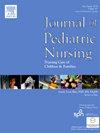获奖海报:利用自动评分系统(MPEWS)的实施,更早地识别急性护理患者的临床恶化
IF 2.3
4区 医学
Q2 NURSING
Journal of Pediatric Nursing-Nursing Care of Children & Families
Pub Date : 2025-09-01
DOI:10.1016/j.pedn.2025.06.037
引用次数: 0
摘要
儿科患者临床恶化的早期识别和干预与较低的发病率和死亡率相关。修改儿科早期预警评分(MPEWS)是该组织建立的一种手动评分系统,作为监测临床恶化的附加层(2014年)。当电子健康记录(EHR)系统中的预定阈值超过时,儿童疾病严重程度(RISK)团队会自动收到警报,对患者进行评估。然而,急症护理护士有各种各样的障碍和竞争的优先事项,这可能会延迟MPEWS的实时记录。此外,在2022年,该组织对其EHR进行了转换,使MPEWS系统无法正常工作。认识到需要一个有效的预警系统(EWS),考虑从以前的MPEWS系统中吸取的经验教训,并纳入最新的研究;该组织于2024年6月在EHR内重建、改造并重新建立了全自动MPEWS系统。由于完全自动化,床边护士无需手动对MPEWS进行评分并将其记录到EHR中,从而消除了向风险团队实时通知的延迟。实施后,初步数据显示在风险评估、快速反应和救援事件(通常定义为在入住ICU后2 h内需要ICU级别干预)的数量上产生了影响。RISK护士每天评估的患者总数从平均46.5人增加到59.5人。相反,被称为每日快速响应的数量从3.41个减少到2.98个。此外,救援事件的数量从每天0.41次减少到0.32次。正在进行的数据收集将继续为组织内的预警系统实践提供信息和指导。本文章由计算机程序翻译,如有差异,请以英文原文为准。
Winning Poster: Leveraging the implementation of an automated scoring system (MPEWS) to earlier identify clinical deterioration of acute care patients
Early identification of clinical deterioration and intervention in pediatric patients is correlated with lower morbidity and mortality. Modified Pediatric Early Warning Score (MPEWS) was a manual scoring system instituted at the organization as an additional layer of monitoring for clinical deterioration (2014). When predetermined threshold was surpassed in the electronic health record (EHR) system, the Recognized Illness Severity in Kids (RISK) team was automatically alerted to evaluate the patient. However, acute care nurses have a variety of barriers and competing priorities that may have delayed real time documentation of MPEWS. Additionally, in 2022, the organization converted its EHR, rendering the MPEWS system non-functional. Recognizing the need for a functional early warning system (EWS), considering lessons learned from previous MPEWS system and incorporating updated research; the organization rebuilt, revamped, and reinstituted a fully automated MPEWS system within the EHR in June 2024. Being fully automated negated the need for bedside nurses to manually score and document MPEWS into the EHR eliminating delays in real time notifications to the RISK team. Post-implementation, preliminary data shows impact in the number of RISK evaluations, rapid responses, and Rescue events (generally defined as requiring ICU level intervention within 2 h of admission to the ICU). The total number of patients the RISK nurse evaluates daily has increased from an average of 46.5 to 59.5. Conversely, the number of rapid responses called daily has decreased from 3.41 to 2.98. Furthermore, the number of Rescue events has decreased from a rate of 0.41 to 0.32 per day. Ongoing data collection will continue to inform and guide early warning system practices within the organization.
求助全文
通过发布文献求助,成功后即可免费获取论文全文。
去求助
来源期刊

Journal of Pediatric Nursing-Nursing Care of Children & Families
NURSING-PEDIATRICS
CiteScore
3.70
自引率
8.30%
发文量
291
审稿时长
65 days
期刊介绍:
Official Journal of the Society of Pediatric Nurses and the Pediatric Endocrinology Nursing Society (PENS)
The Journal of Pediatric Nursing: Nursing Care of Children and Families (JPN) is interested in publishing evidence-based practice, quality improvement, theory, and research papers on a variety of topics from US and international authors. JPN is the official journal of the Society of Pediatric Nurses and the Pediatric Endocrinology Nursing Society. Cecily L. Betz, PhD, RN, FAAN is the Founder and Editor in Chief.
Journal content covers the life span from birth to adolescence. Submissions should be pertinent to the nursing care needs of healthy and ill infants, children, and adolescents, addressing their biopsychosocial needs. JPN also features the following regular columns for which authors may submit brief papers: Hot Topics and Technology.
 求助内容:
求助内容: 应助结果提醒方式:
应助结果提醒方式:


